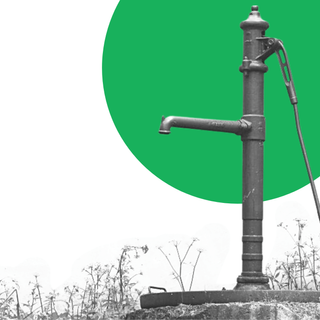
New Govt Rules Require Tech Companies to Reveal Users Who Post ‘Unlawful, Inflammatory’ Content
New IT rules also require OTT platforms to remove objectionable content within 36 hours once flagged by government authorities.

Social media firms will now have to disclose the identity of the “first originator” of any content deemed “objectionable” by users or the state, according to new draft digital media regulation guidelines. The rules, announced by Law and IT Minister Ravi Shankar Prasad on Thursday, seek to regulate social media, digital news platforms, and OTT content providers.
“We are trusting the platforms to follow these regulations,” Prasaid said, adding that “the focus of this guideline is on self-regulation.” Soon set to become law, the Information Technology (Intermediary Guidelines and Digital Media Ethics Code) Rules, 2021, experts say, would be increasing censorship, monitoring and policing of content across digital media platforms.
The person who drafts and sends an “objectionable message” for the first time is the “first originator” of the message, the rules dictate. They clarify that objectionable content pertains to messages that contain offences “related to the sovereignty and integrity of India, the security of the State, friendly relations with foreign states, or public order, or of incitement to an offence relating to rape, sexually explicit material or child sexual abuse material,” which will be “punishable with imprisonment for a term of not less than five years.”
While the draft does not mention the specific mechanism for flagging objectionable content, it can be assumed that the content would be deemed “objectionable” either by users or government agencies that come across it on social media or on digital messaging platforms. These guidelines follow a new program announced by the Ministry of Home Affairs in which people can report online content to the government after registering as “unlawful content flaggers.” The current guidelines, the government says, are supposed to empower online users to self-regulate the content they consume, surveil their fellow users and report content they deem “unlawful” or “inflammatory.”
The rules add that while complying to identify the first originator, platforms are not required to disclose the contents of the message or any other information related to the users. “We don’t want to know the content, but firms need to be able to tell who was the first person who began spreading misinformation or other objectionable content,” Prasad said in a press conference. The rules also say that if the first originator of the information is located outside Indian territory, then the first person who shares the message within the territory of India would be considered the first originator of the information.
Related on The Swaddle:
All The Arguments You Need: to Convince People They Should Care About Digital Privacy
The platforms would be liable to reveal information about the first originators by a judicial order passed under the IT Act. This comes on the heels of a recent government order, under the same IT act, which forced Twitter to withhold social media accounts and tweets that expressed support of the farmers’ protests.
The messaging platforms that would have to comply with these rules would need to rework their encryption models to comply with the government, thus weakening them. Currently, Whatsapp employs end-to-end encryption, which means that it does not see or store the messages a person sends; it does not link any messages to a person’s identity either.
Message encryption is crucial in today’s time as it is used by millions to prevent threats like identity theft. “Traceability will break one of the core values of end-to-end encryption, which masks the identity of a person with respect to the message content, which is what allows people to have private conversations over instant messaging apps,” Apar Gupta, the executive director at Internet Freedom Foundation (IFF), told The News Minute.
Privacy experts also note that there is the possibility that social media companies may fall back on these policies to escape liability on their part. The right to freedom of speech and privacy could end up bearing the brunt of these policies. “…the latest draft rules, if they go through, would be a tremendous expansion in the power of the government over ordinary citizens eerily reminiscent of China’s blocking and breaking of user encryption to surveil its citizens,” the IFF noted in a critique of the draft.
In addition, the first originators of the message might not have any control over who forwards their content, and in what context. This would also lead to platforms being vulnerable to spoofing attacks — situations in which a person or a program can falsely modify original information to identify as something it is not, often leading to the framing of innocent people. There is also a possibility that these rules would lock platforms out of India that use this encryption but don’t have resources as robust as Whatsapp, such as Signal or Telegram, Gupta added. While Facebook has hailed the new draft guidelines, it is not clear how these laws would apply to Whatsapp yet.
The guidelines also aim to regulate content produced by OTT platforms, which will be required to delete objectionable content within 36 hours once flagged by the government. In addition, the guidelines mandate that digital media platforms set up a three-tier grievance redressal system, comprising of company officials at the first level, an industry-wide body at the second, and an inter-ministerial committee at the top. This is a part of the draft’s “oversight mechanism” ensuring that all published content is appropriate according to the guidelines, and has the power to demand that any content be deleted or modified. A likely consequence, experts note, would be digital media platforms self-censoring themselves, harming citizens’ digital rights and potential creativity in the bargain. Social media platforms also have to set up the same committee, and it must acknowledge requests of removal of any content that the government might find objectionable within 24 hours.
In addition, the guidelines also put digital news media under the purview of the rules that govern print and broadcast, dictating that they will also have to implement the same three-tier redressal mechanism. This allows for the redressal committee to block access to any content that it might find objectionable. Because the draft does not define digital news platforms clearly, it gives the government significant discretionary powers to censor media and place the burden of compliance on smaller news outlets — which may have only limited resources.
Satviki Sanjay is an editorial intern at The Swaddle. She's currently studying philosophy at Miranda House. When not studying, she can be found writing about gender, internet culture, sexuality, technology, and mental health. She loves talking to people, and you can always find her on Instagram @satvikii.
Related


Illegal Amazon Rainforest Plots Are Being Offered For Sale on Facebook Marketplace
